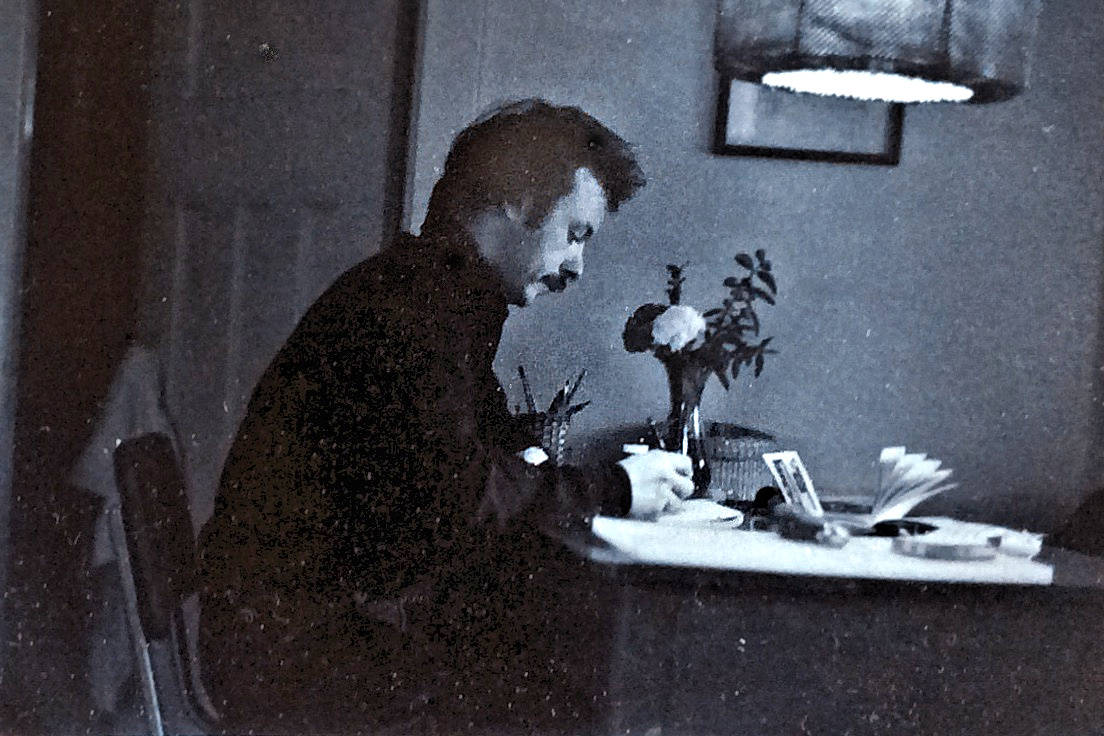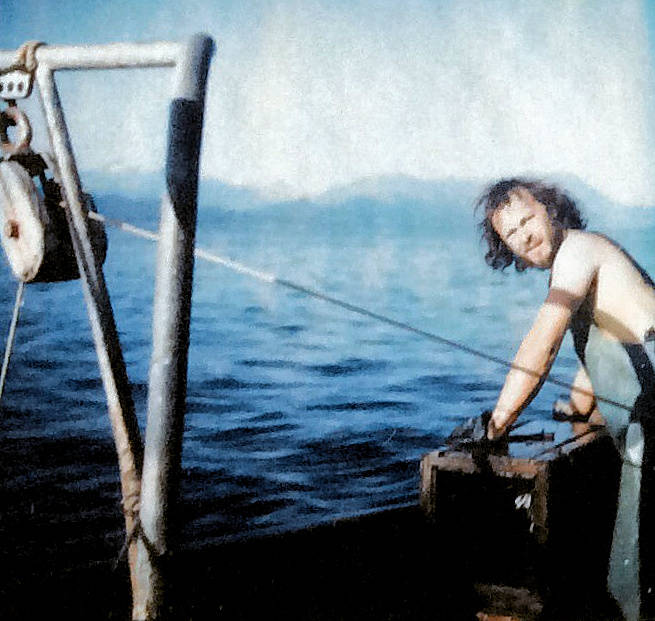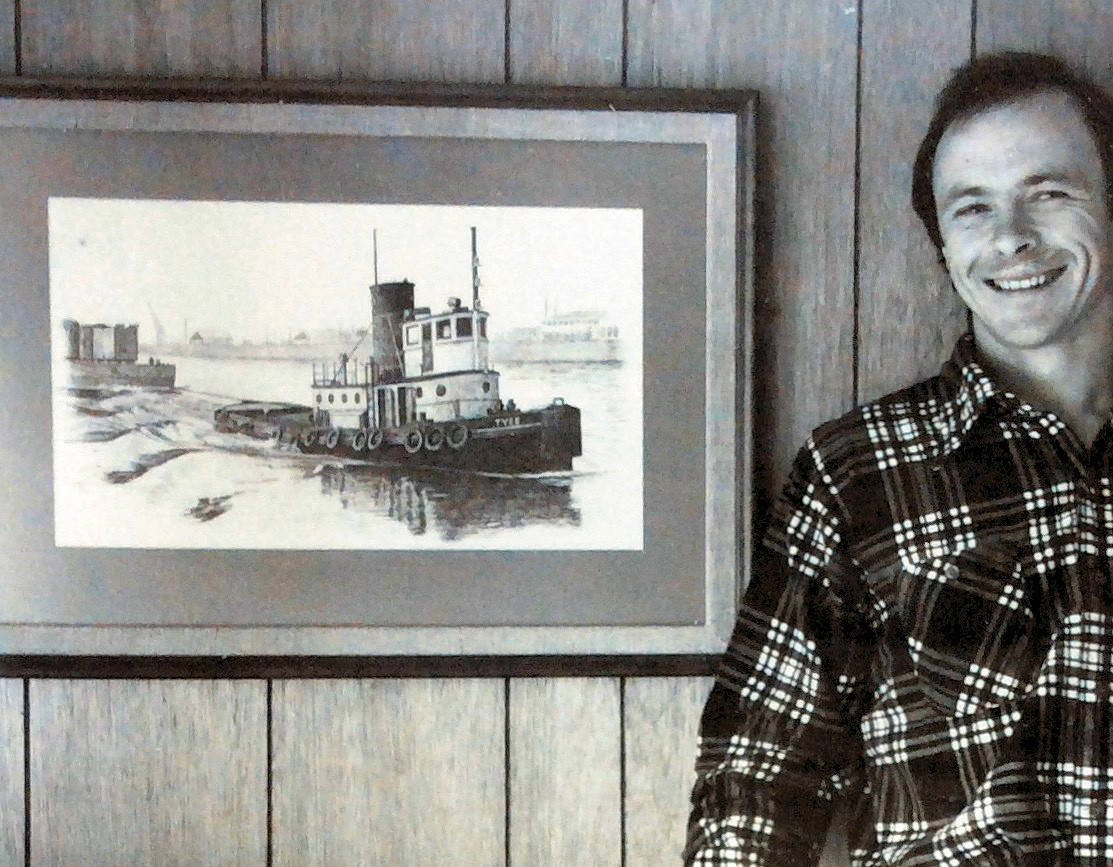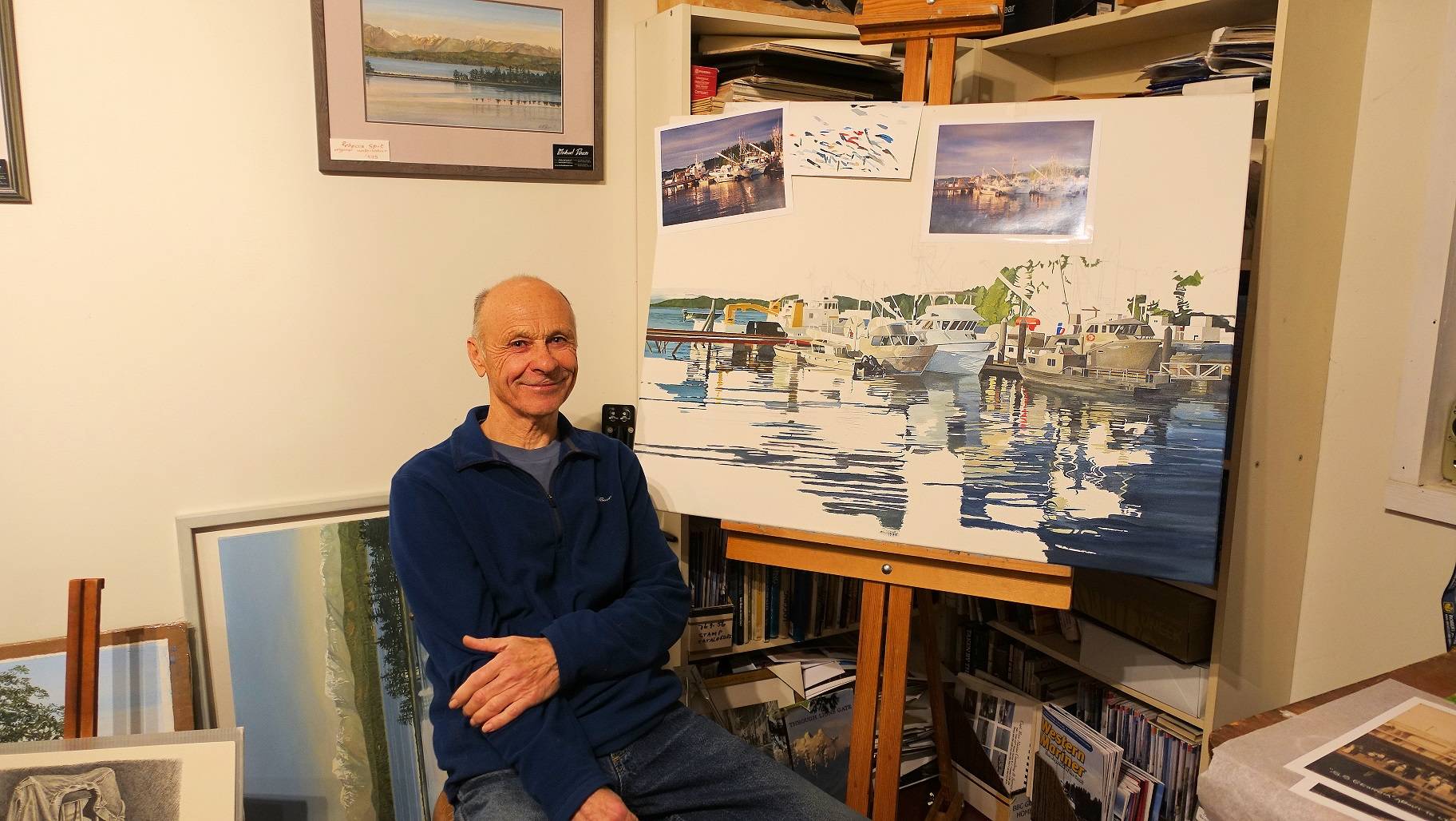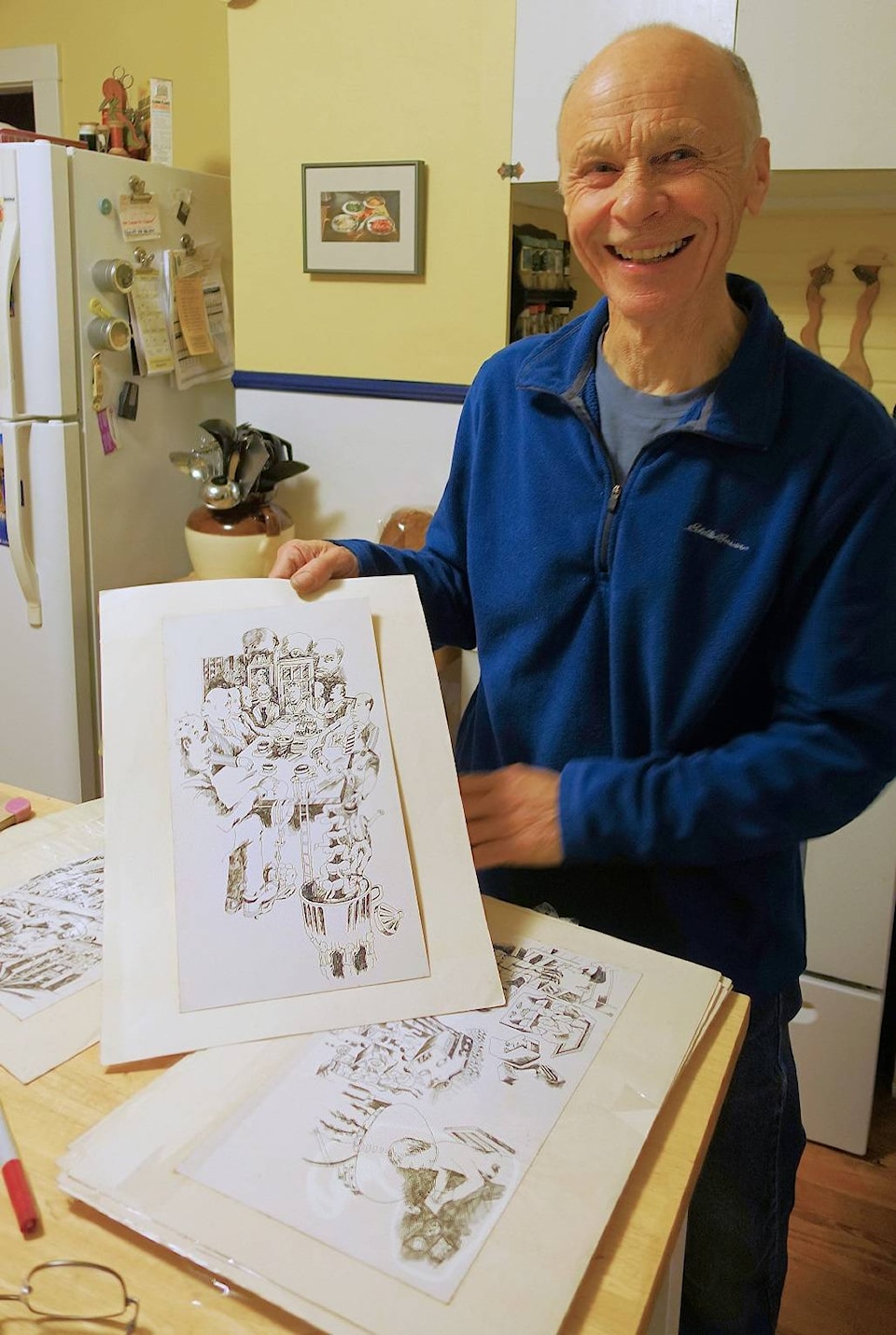Bonnie Weisz Special to the Chronicle
The art of Michael Dean has a clear theme: local, working vehicles (especially boats), water and the reflections that play with them.
For Dean, local means Ladysmith, and his nearly 40-year love affair with the small, picturesque Vancouver Island community has transformed him into its signature artist.
“People said: Oh, you should go to Vancouver, but I wanted to live here; this is where I wanted to be. Ladysmith is a real town, a working town. That’s the way I think about it. Many of the people who live here are descendants of coal miners, of coal miners’ wives — working people.”
It was after settling near the Ladysmith waterfront that Dean started to experience success with his art. Life as a professional artist was always a goal, but finding his muse was anything but planned.
Like most young, struggling creatives, the Lancashire native began by making ends meet however he could. His initial move to London from his home near Manchester, England, was to try and make it in the music industry. he joined forces with a friend who played piano and wrote songs, while Dean wrote the lyrics.
He was about 19 when the Playboy Club arrived in London. Dean found a job there as a ‘go-for’/handyman while the club prepared to open its doors. When it did, he became a busboy. At about the same time Penthouse Magazine also decided to expand into Europe. Dean worked there shipping mail-order books not available in British bookstores at the time, with titles like: The Decameron, The Tropic of Cancer and Lady Chatterley’s Lover.
In London working on his drawing, Dean was encouraged by mentor and childhood friend, artist David Vaughan, who had become successful in his own right. He followed Vaughan to Vancouver, where Dean had his first show in Canada. Then a late-’70s invitation to visit Ladysmith ignited his love affair with boats and reflections on the water. A life-long fascination with light and shadow had found the perfect home in Ladysmith, and so did he.
His first home here was an old fishing boat that was docked at the then-Ivy Green Marina. Later, he found a house owned by the CPR that was renting for $275 a month. It had an orchard and a large window facing Ladysmith Harbour. Dean stayed there for 10 years.
“It was a crummy house, but it really helped because the low overheads allowed me to survive while I was getting going.”
Towards the same end, he also worked on boats.
“I made a living on tugs and things when I first got here to make some money and I enjoyed that; I enjoyed working on the water. I also worked on a freight boat going up the coast to logging camps. I enjoy the company of those people; I enjoy talking to them.”
Dean is known today for his paintings of coastal vessels, logging and forestry, and local coastal scenery. But he is still very fond of pen and ink.
When asked if he has a favourite piece, he reflects back on an early drawing. He had come in from chopping firewood and taken off his denim jacket, which he then put over the back of what he calls an “old Canadian-style chair”. He sat down to enjoy a cup of coffee and the sun broke through casting a long shadow over the chair and jacket which, he says, caught his eye.
“I thought, Oh that’s nice! If you don’t capture it, often it’s never there again.”
Dean still has the sketch. It seems clear as he tells the story that it’s as much a favourite memory now, as a work of art.
His art training is sparse; some courses in high school and training at the Vancouver School of Art in etching and lithography. But from a very young age, Dhe knew he wanted to be an artist. His style, as with most artists, has evolved.
His first love was black-and-white line-drawings. His early pieces relied heavily on pen and ink to create fanciful stream-of-consciousness illustrations, which is not exactly what you might expect to find if you are only familiar with his recent work.
He wasn’t really influenced by any particular painters, he says, although there are works he really loves from painters such as Francis Bacon, the Dutch painter Willem de Kooning, and Paul Gauguin.
“Bacon was a great painter in my eyes,” Dean reflects. “I don’t like Picasso particularly; certain periods of his work are too angular. I loved the colours and the shapes of the women Gauguin painted. Van Gogh, uh, I like it but I like Gauguin better… de Kooning is a tremendous painter; to see how his work evolved is wonderful. Bacon did these grotesque figures; when I saw those in the Manchester Art Gallery as a kid I thought, Wow!”
When asked what makes his own work unique, Dean says that once perhaps it was the subject matter, the light and the way he paints water, but now he adds, he doesn’t really think about it.
He knows what he wants to paint, he says, and goes about doing it. He tries to capture and share what he loves, the play of light and shadow that has come to be the hallmark of his work; the surface of the water, but also what’s below the surface.
“I want to share my personal experience of the beauty I see with others. My previous work in London was more about the expression of personal thoughts or social commentary, but not with the work now. Now I try to represent this whole place; all the different aspects of it… I appreciate the beauty.”
Are there drawbacks to a career in art? Not for Dean. It’s clear his work, his love of Ladysmith, the natural beauty of the Island, and of the working people he found here are inseparable.
“There’s no downside to being an artist for me. There are times when you have to be very frugal, disciplined, and you have to plan for the slow times. Experience taught me that. When I first moved here, there wasn’t an obvious path to success. I would paint tugs and take them to the companies in Vancouver that owned them to try and sell them my work. But Ladysmith was a real town, a working town, and I wanted to be here.”
Dean says there’s no special way he approaches his work today.
“I’m just a creature of habit. If I don’t paint for a few weeks I get antsy. It’s to do with the creative process, and it’s really important to me. I learned about self-discipline and getting the work done and that’s what comes first. It’s important if you want to produce some work, whatever it is, you’ve got to commit yourself to it; you’ve got to give it its time.”
“It’s got to be more important than anything else at the time and you have to commit to the art. I work five days week, regular hours in the studio.”
Dean’s Studio is located at 830 - 5th Avenue, and is open Monday to Friday, 9 a.m. to 4 p.m., or by appointment. His paintings and prints are also for sale at the E.J. Hughes Gallery iand Imagine That in Duncan, and at Bayview Framing and Art on 1st Avenue in Ladysmith. Check his website for more information.
